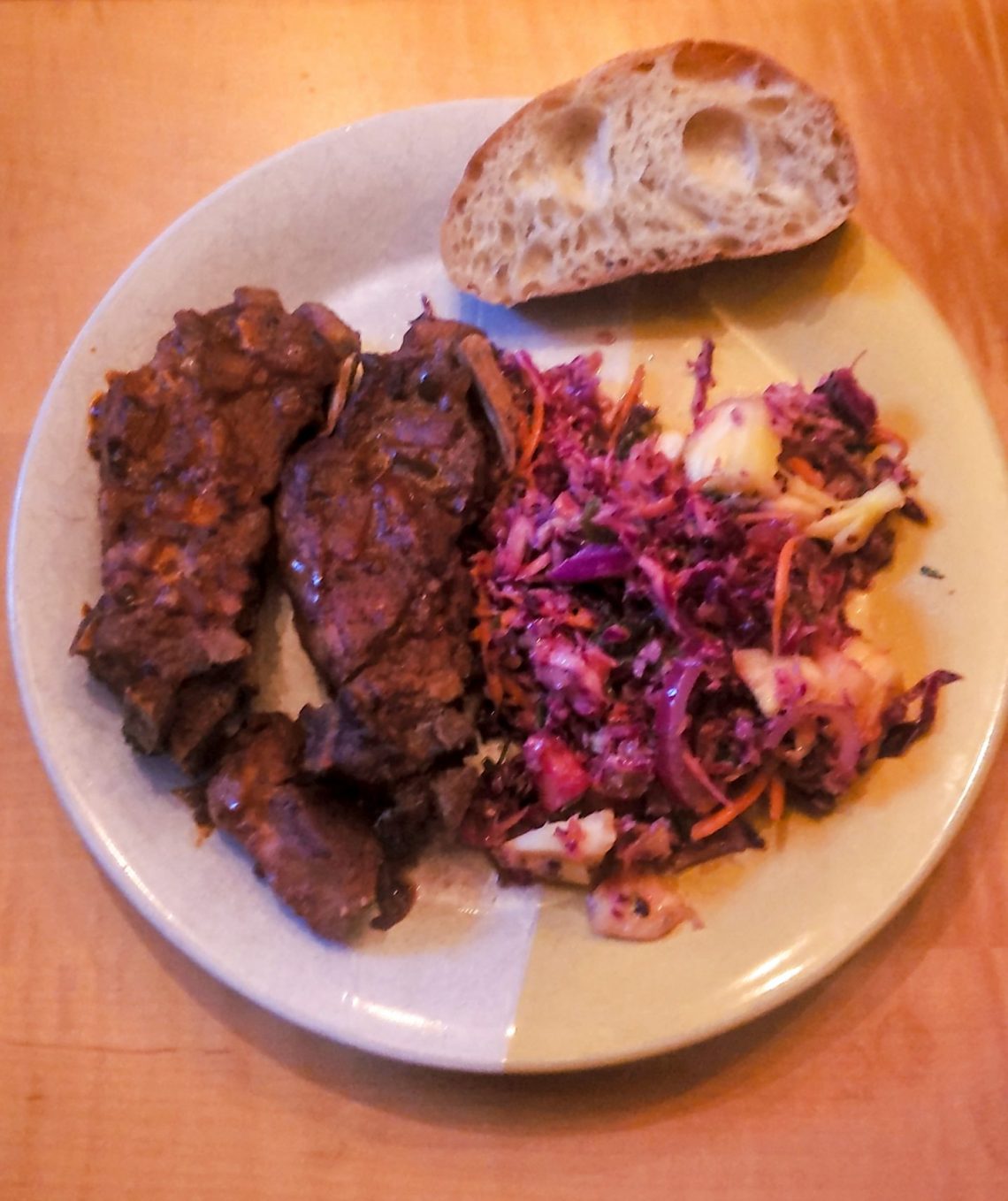
On a Quest to Concoct the Best BBQ Sauce
I was a born carnivore, but lately I’ve found that I can do without meat in a number of meals. Usually, four or five of our weekly main meals are vegetarian, and the others include fish or chicken, not red meat. That’s a radical change from growing up on a farm devoted to raising prime cattle where four or five main meals each week featured beef from the freezer.
I still enjoy an occasional beef meal, and this summer I think that they are likely to be barbecue. There’s something about the taste of slow-cooked braised beef and pork, where the cooking temperatures seldom rise above 225 degrees and where the tough cuts – ribs, briskets, and pork shoulders – cook slowly so that the fat infuses the tougher muscle fibers until you achieve pull-apart goodness and flavor.
We didn’t barbecue a lot when I was young, probably because of the time required. Mostly, we’d grill steaks and burgers, but not ribs or brisket barbecue. That was left to restaurants. Because we were closest to Kansas City and its tradition of tomato-based barbecue sauces, I suspect I favor that style. Mrs. Farmboy prefers the dry-rub Texas style where the meat is rubbed with a mix of dry ingredients and roasted slowly without the sauce.
This summer, I am on a quest to create a good barbecue sauce to coat the meat – one with the right balance of tangy, sweet, and spicy. Many of the commercial sauces don’t have the balance I’m looking for. Of course, I could take a shortcut and just add the appropriate element to fix a store-bought sauce – a little acid (lemon juice or vinegar) for tang; some honey, molasses, or even fruit for sweetness. But for many of the bottled brands, it’s the spice that doesn’t quite work for my taste buds. Plus, many include the stabilizers, additives, and other ingredients to make them shelf-stable. Why not make your own?
Not a secret sauce
Pick a good basic recipe, then experiment to find your balance of sweet/sour, fruity/smoky, and spicy/mellow. That’s what I did, starting with a basic sofrito, the Latin-American aromatic sauce used as a foundation of tomato, sweet onions, garlic, and peppers. To build, I added a cup of cola, ketchup, and some molasses for sweetness, vinegar for tang and balance. Then came the flavorings. I favor chili powder, plenty of chopped chipotles with adobo, some liquid smoke, Worcestershire sauce, and Dijon mustard. All this I brought to a boil, then simmered for 10 or 15 minutes. Then time for a taste. It lacked some tang, so I added the juice of a lemon. Mrs. Farmboy said it was not spicy enough, so I added another chipotle and adobo sauce. Still missing something, I added a bit of Thai fish sauce and a quarter cup of bourbon, just for a kick. Not bad, if I do say so myself. I coated some slow-cooked country ribs, and the sauce was a great complement (pictured).
Other ideas for fun and variety
Of course, you could also add Asian fish sauce, soy sauce, hoisin sauce, and five spice powder for a more Asian twist. Consider paprika, white pepper, tarragon, horseradish, or cinnamon for your approach. Don’t forget the possibility of beer, sherry, rum, bourbon, or vodka, should that float your boat. And if you like barbecue sauce but don’t eat meat, how about using it to top or mix into baked beans, or even as a dipping sauce to serve with roasted broccoli or cauliflower?
At an event we attended this week, pit master Mike Hugo delivered a mouth-watering pile of ribs, coated with his signature blueberry barbecue sauce. They were superb, smoked low and slow for five or six hours, then coated with the sauce.
My first shot turned out pretty good. I’ll continue to tweak it here and there to see how I can improve. How about the rest of you carnivores? Do you have a sauce you’d be willing to share?
Editor’s note: Don’t miss “High on the Hog: How African American Cuisine Transformed America,” especially episode 4, “Freedom,” about the original Black cowboys (cow boys) and the genesis of Texas barbecue. Happy Juneteenth.
To comment, please click on “Read in Browser” or on the headline to view the blog on the website. You can log in and comment at the end of the blog to share your thoughts and start a discussion.
If you’d like to share the blog, click on the Facebook icon or one of the others. Thanks!




